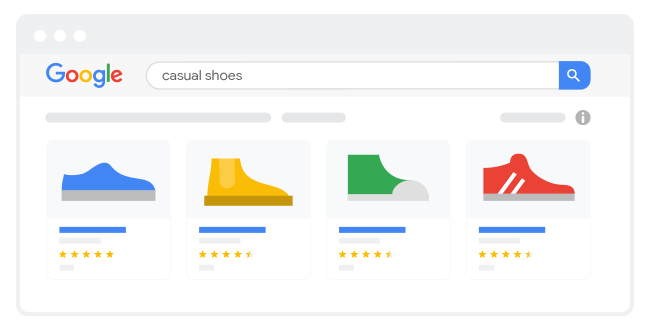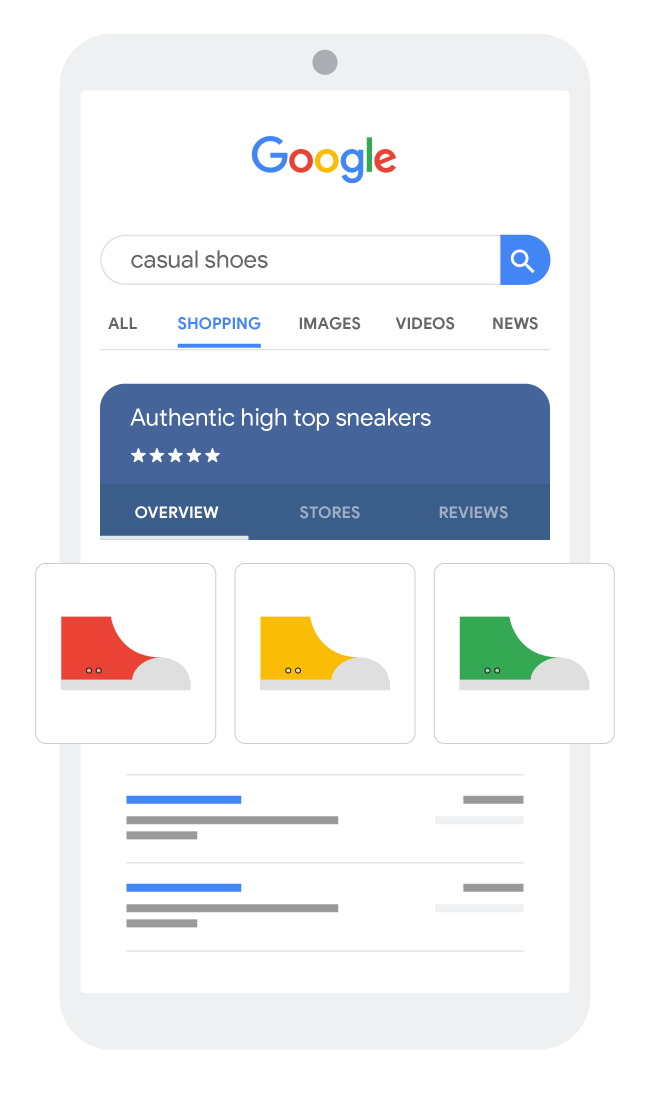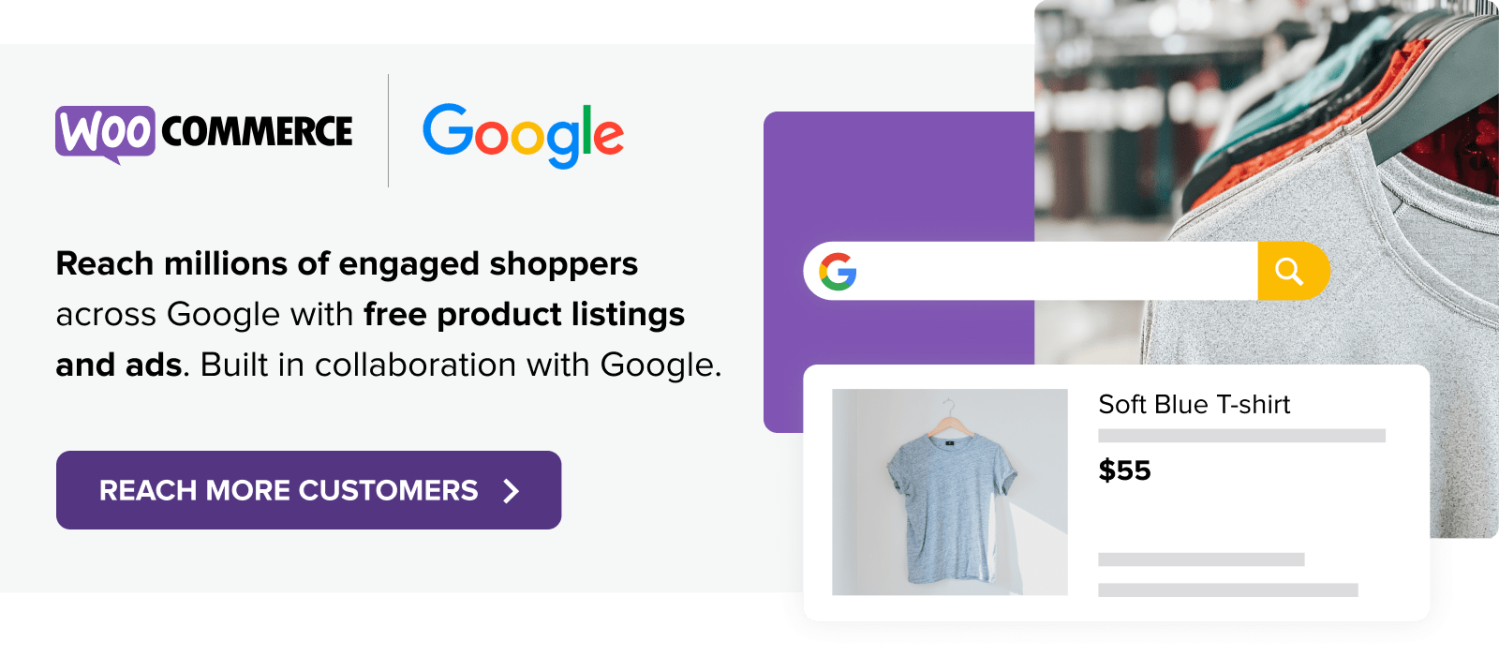Note: This article assumes the reader has some familiarity with using Google Ads but may not have focused on Google Ads as a major part of their advertising strategy. Brand new to using Google Ads? Read this article to learn more about creating a Google Ads account, understanding terminology, and developing your first ad.
A well-executed Google Ads strategy is key to boosting conversions and revenue for your business. While there’s a time and a place for social media marketing, search engine optimization, and even print ads, there’s no better way to get instant visibility for your products than search engine marketing (SEM) on Google. Google is not only the most widely-used search engine in the world, it’s also the most visited of all websites.
With Google’s reported 2+ trillion searches per year, it’s difficult to justify not using Google Ads. For starters, Google Ads will get you in front of a large audience, but with a solid strategy, it will also get you in front of the right audience.
The targeting possibilities are virtually endless. You can put your ads in front of just about any type of customer you can think of, and you can do so throughout each stage of the buyer’s journey. Whether your store sells widely-used goods and services, or your offerings are designed for a niche market, Google Ads can help you find the right shoppers.
Finally, you can track your ad performance, measure your success, and adjust your strategy as you go so that you stay on budget while getting the maximum return on ad spend (ROAS).
So, with all of this in mind, let’s examine how you can create a winning strategy to get the most out of your Google Ads campaigns.
Connect your site to Google Merchant Center, Ads, and Analytics
↑ Back to topIf your site isn’t already connected to Google Analytics, Google Merchant Center, and Google Ads, you’ll want to make sure you do this first. Google Merchant Center is where retailers can upload or sync product data to appear in free listings and Google Shopping Campaigns.

The easiest way to do this is to use WooCommerce’s suite of extensions: Google Analytics Pro (or the free version) and Google for WooCommerce. These extensions seamlessly sync your store with Google’s tools for listing and advertising products on Google Shopping and tracking performance directly from your dashboard.
Brainstorm your target audiences
↑ Back to topBefore you craft your strategy, you’ll want to do some brainstorming. Determine what your business needs to focus on and who your target demographic is if you don’t already know these things. Ask yourself relevant questions about the type of person your products appeal to:
- What other products do they like to buy?
- Where do they live?
- What is their occupation?
- What are their hobbies?
- What’s their age range?
- Where do they shop?
- What search terms do they use?
- Are they primarily male? Female? Both?
- Do I want to target past and current customers?
- Do I have a list of customer emails I can use to find similar types of shoppers?
Keep in mind that everyone’s strategies will differ based on what they’re selling. Add your own demographic targeting questions into the mix that you feel are specific to your products.
Potential customers may search for your products by name. Or, if people have never heard of your product, you may need to get in front of your ideal audience by targeting the topics they’re reading about.
For an example of topic targeting, let’s say you’re a surfboard shaper specializing in single-fin longboards. Shoppers may not be searching for your exact boards, but they might click on topics like, “World’s Best Longboarding Destinations.” Now, you’ve identified an audience with an interest in surfing — specifically, longboarding. This is a great opportunity to serve your ads on specific webpages that cater to people with an interest in longboarding.
Once you’ve shown your ads to these individuals, you can continue to reach out to them by remarketing and serving up relevant ads across their browsing experience in an effort to persuade them to buy your product.
Don’t forget to take advantage of Google tools. Grow My Store provides a website evaluation with detailed insights and custom recommendations to help you improve your site performance. Google Trends shows the popularity of different search terms and topics through real-time and historical Google Search data.
Pro tip: Looking to get started without a heavy investment into keyword and audience research? Shopping campaigns will use your Product Feed data synced through your WooCommerce store to display your products across Google networks, without having to manually add target keywords. Shopping ads are generated based on your budget, the countries you sell in, and the content and quality of your eCommerce products.
Once you’ve established who you’re targeting, it’s time to set up your campaign strategy.
Choose ad types that help you meet your goals
↑ Back to topYour goals will define the type of ads you want to run and how much you want to spend on them. At a minimum, you should decide whether you want to focus on attracting potential buyers or converting and retaining customers. All Google Ad types are pay-per-click (PPC) so you only pay for the ad when a person clicks on it, but Google serves ads in a variety of ways and contexts. Some may be better suited than others to your business. Below we’ll review the types of ads you might want to focus on:
Attract potential buyers
Search ads
Search ads are ideal for going after users who are actively searching terms that relate to your business. Unlike SEO, where you work to earn one of the top results organically, with Search ads, you’re paying to have one of the top results. Each time your ad is clicked, you’ll pay a fee. These types of search ads are a great way to target customers in real-time for immediate results.
Before you create your first campaign, you’ll need to select your keywords. The term ‘keywords’ makes it sound like they have to be individual words, but they are really more accurately ‘keyphrases’. You’ll get better results if you use multiple words that are highly specific like, ‘custom painted freestyle longboard’ vs. generic single-word terms like ‘longboard’. Broad, generic terms may generate a lot of traffic, but they’ll result in fewer sales. The more you target your keywords at a specific type of search, the more likely you’ll be to make a conversion.
Google Ads Keyword Planner can help with these. Keep this information handy for when you’re ready to launch your campaign.
Shopping ads
Shopping ads show actual photos of your product or service. They also provide prices and information about your store, not to mention incredible visibility for your products. Shopping Ads are easy to set up and can be one of the most effective ways to drive sales. Instead of keywords, Shopping ads use the product data in your Merchant Center to determine how to show your ads in relevant searches.

Smart Shopping campaigns can simplify campaign setup and management, using automated bidding and ad placement to promote your products across Google networks. With Smart Shopping campaigns, Google uses machine learning to create and display your product feed in a variety of ads across their network. Learn more about Smart Shopping campaigns.
Pro Tip: Shopping Ads generally result in better-qualified leads, increase your reach, and display in a way that’s mobile-friendly. This is where Google for WooCommerce comes in. This extension connects your WooCommerce store with your Google Merchant Center account, and syncs your products to free listings and Smart Shopping Campaigns.
Display ads
Display ads are image-based ads shown across a wide variety of websites. They can be great for finding customers who are likely to be interested in your product, but don’t yet know it exists. Use them to target visitors based on things like demographics, interests, and the type of content they’re viewing.
Convert and retain customers
Remarketing
Remarketing is an effective strategy you can use with any of the above types of ads. This kind of marketing allows you to show your ads to people who’ve already used your mobile app or visited your website.
You can get even more advanced and upload your own customer list to Google Ads (make sure they’re customers who’ve opted in, of course). You should continue to learn more about your audience by offering things like free eBooks and guides in exchange for additional information. This audience is far more likely to be interested in your offerings than the average Joe. So it’s worth dedicating a separate budget to continue to nurture them.
Dynamic Remarketing
Dynamic remarketing goes one step beyond standard remarketing. It allows you to show returning visitors ads that showcase the specific products or services they’ve previously viewed on your site. Begin by creating a feed that contains all of your products or services in addition to details like pricing, specs, product IDs, and images. These details will automatically be pulled into dynamic ads to bring previous visitors back to your site to complete sales. It’s also worth noting that you can use this tactic to upsell and cross-sell to your existing customers.
One thing to keep in mind is that remarketing will soon become a lot more challenging due to Apple’s new privacy model. iOS 14 app developers are now required to adhere to new rules like providing users with information about their data collection practices and asking for permission before tracking users across different apps and sites. Nevertheless, you’ll still be able to use alternative strategies for the time being through Android and PC-based platforms.
Establish budgets
↑ Back to topDetermine what your overall budget will be and what you’re willing to spend per day on each campaign based on your goals. Depending on your industry and the size of your business, you may want to spend as little as $25 a day or over $10,000 a day.
Understand key performance indicators (KPIs)
↑ Back to topYou’ll also want to consider your KPIs. Is an ad still successful if it gets lots of clicks but no conversions? Are you willing to spend $50 per click on a $60 product? The following basic ad metrics will influence how you evaluate whether you’re achieving your advertising goals:
- Number of clicks: The overall number of times an ad was clicked
- Cost per click (CPC): How much you’re charged for each click
- Click-through rate (CTR): The percentage of viewers that clicked the ad
- Conversion rate: The percentage of people who clicked on your ad that actually bought your product
- Cost per conversion (CPC): The total cost of your ad campaign divided by the number of conversions
- View-through conversions: The number of people who saw your ad, didn’t click on it, but eventually went to your website and made a purchase
Prepare and implement your campaign(s)
↑ Back to topMake sure to create your separate campaigns, ads, and ad groups according to the goals and audiences you want to focus on most.

Adjust your strategy based on ad performance data and changes to your business
If your campaign uses Smart Bidding, Google’s machine learning will handle this for you. Using Google for WooCommerce and a Smart Shopping campaign, your ads will automatically find bids that will generate the most value using Google’s Maximize Conversion Value algorithm.
If you’re running ads with a manual bidding process, frequently review your ad performance. Tailor your bidding strategy and adjust your bids according to your KPI goals and how, when, and where people are searching.
For stores with long sales cycles, you’ll want to appear in front of prospects dozens of times. To help make it happen, bid higher on audiences who’ve previously been to your site or interacted with your ads.
Maybe you have an ad that’s performing well on cell phones. You might choose to increase your bid for your mobile device ads by, say, 10% so that it gets shown to more users on cell phones. Conversely, if an ad isn’t performing as well on desktops or tablets but you’re still getting some action, you can decrease your bid for ads shown on those devices.
In addition to keeping an eye on your KPIs, you’ll want to adjust your campaigns as your business and audience evolves. If it’s been several years or more since you last defined your market, consider going through the process again. Revisit your target audience periodically using data from past customers and research on new demographics that you want to cultivate.
Target the traffic that counts
↑ Back to topUsing Google Ads is a smart way to drive the right traffic to your business. While it’s true that there’s a bit of a learning curve in the beginning, it’s well worth the effort. Diversifying your ad strategy can help expand your overall reach, and automated solutions like Smart Shopping can save you time by not having to select keywords or manually adjust bidding. And, if you’re implementing a solid, well-crafted strategy, you can customize your targeting, build brand awareness, reach a massive audience, and maximize your ROI.
About





